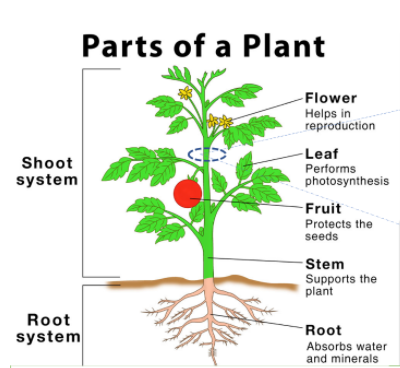
The portion of stem present between two nodes is called
A. Axil
B. Internode
C. Axillary bud
D. Apical bud
Answer
495k+ views
Hint: The different parts of a plant are- stem, leaves, root, flower, buds, node, internode etc.
Complete answer: A stem and root are two main structural axes of a vascular plant.
The stem supports leaves, flowers, and fruits, transports water and dissolved substances between the roots and the shoots in the xylem and phloem, stores nutrients, and produces new living tissue.
The stem is normally divided into nodes and internodes.
The nodes hold one or more leaves, as well as buds that can grow into branches.
Adventitious roots may also be produced from the nodes.
The internodes are present between two nodes.

So, the correct answer is “Option B”.
Additional Information: Stems have tissues called xylem and phloem.
The xylem tissue transports water by the action of transpiration pull, capillary action, and root pressure.
The phloem tissue consists of sieve tubes and their companion cells. The two tissues are separated by cambium. Cambium is a tissue that divides to form xylem or phloem cells.
Note: Stems have four main functions, they are-
1. The stem supports the elevation of leaves, flowers, and fruits.
2. Stems help to transport fluids between the roots and the shoots in the xylem and phloem.
3. It helps to store nutrients.
4. It helps in the production of new living tissue.
Stems have cells called meristems that annually generate new living tissue.
Complete answer: A stem and root are two main structural axes of a vascular plant.
The stem supports leaves, flowers, and fruits, transports water and dissolved substances between the roots and the shoots in the xylem and phloem, stores nutrients, and produces new living tissue.
The stem is normally divided into nodes and internodes.
The nodes hold one or more leaves, as well as buds that can grow into branches.
Adventitious roots may also be produced from the nodes.
The internodes are present between two nodes.

So, the correct answer is “Option B”.
Additional Information: Stems have tissues called xylem and phloem.
The xylem tissue transports water by the action of transpiration pull, capillary action, and root pressure.
The phloem tissue consists of sieve tubes and their companion cells. The two tissues are separated by cambium. Cambium is a tissue that divides to form xylem or phloem cells.
Note: Stems have four main functions, they are-
1. The stem supports the elevation of leaves, flowers, and fruits.
2. Stems help to transport fluids between the roots and the shoots in the xylem and phloem.
3. It helps to store nutrients.
4. It helps in the production of new living tissue.
Stems have cells called meristems that annually generate new living tissue.
Latest Vedantu courses for you
Grade 11 Science PCM | CBSE | SCHOOL | English
CBSE (2025-26)
School Full course for CBSE students
₹41,848 per year
Recently Updated Pages
Master Class 9 General Knowledge: Engaging Questions & Answers for Success

Master Class 9 English: Engaging Questions & Answers for Success

Master Class 9 Science: Engaging Questions & Answers for Success

Master Class 9 Social Science: Engaging Questions & Answers for Success

Master Class 9 Maths: Engaging Questions & Answers for Success

Class 9 Question and Answer - Your Ultimate Solutions Guide

Trending doubts
Give 10 examples of unisexual and bisexual flowers

Draw a labelled sketch of the human eye class 12 physics CBSE

Differentiate between homogeneous and heterogeneous class 12 chemistry CBSE

Differentiate between insitu conservation and exsitu class 12 biology CBSE

What are the major means of transport Explain each class 12 social science CBSE

Why is the cell called the structural and functional class 12 biology CBSE




